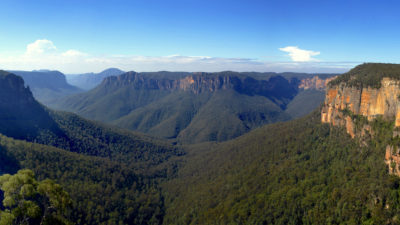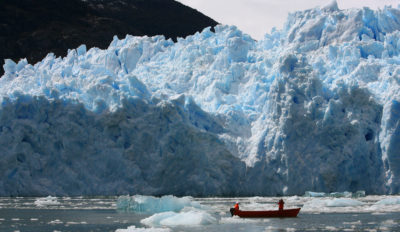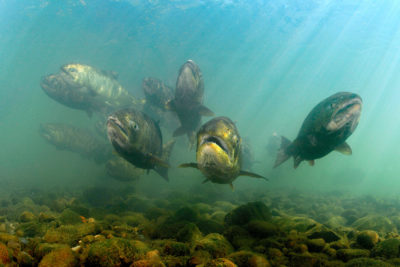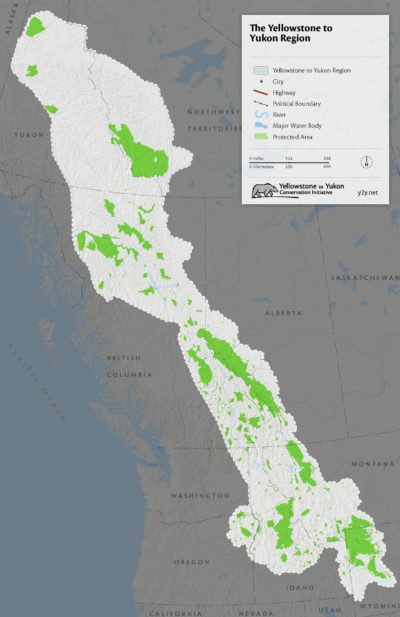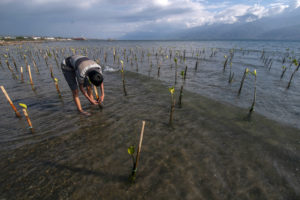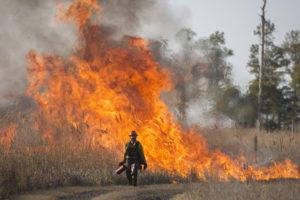Last month, parties to the Convention on Biological Diversity met virtually to set global conservation goals for the next decade. Although the 196 signatories to the treaty did not meet the goals they set a decade ago, they nevertheless are moving to expand on those goals, most notably with a proposal to place 30 percent of the earth’s continents and oceans in protected areas by 2030. This “30 by 30” plan has been the subject of fierce argument, with some critics calling it an environmentalist pipe dream and a新殖民主义者土地抓取通过限制新保护区中允许的活动,可能会对as many as 300 million people,包括世界上许多最贫穷的人。
但是,许多科学家也担心新的和现有保护区的更深层次问题:随着地球的继续温暖,许多保护区将变得越来越适合适合他们创建的生物和生态系统的类型。。“The idea of national parks as a place where you could draw a line around an area and not do much of anything but protect it from external threats, that biodiversity would persist there — that’s no longer an accurate portrayal,” says independent ecologist Carlos Carroll.
问题是,接下来会发生什么?近年来,科学家们提出了许多新型的保护区,从慢慢变化的地方可以找到临时避难所,到可能导致气候变化和人为变化的景观的走廊。但是,这些想法仍然相对未经测试,一些科学家持怀疑态度,即当保护主义者在气候稳定的假设下仍在保护方面运作时,它们在实践中的效果比实际上更有效。
将Refugia视为一条慢速道路,气候变化不太迅速,这是更现实的。
卡洛尔是一个合着者学习于9月份出版Nature Communications这表明了保护主义者面临的挑战范围。在蒙大拿州生态学家所罗门·多布罗夫斯基(Solomon Dobrowski)的领导下,该研究使用了一种称为“空间时间”的方法,其中世界上的一个地方扮演了他人未来的幽灵。毕竟,体验温暖气候的最简单方法是下坡或朝赤道旅行。
团队从当前气候的地图开始,分解为四平方公里的细胞。然后,他们将这张地图与从2摄氏度(3.6摄氏度)的气候投影构建的类似地图比其比其前工业平均平均水平高的地图进行了比较,这是我们在本世纪中叶到达的模型项目的温暖程度。最后,它们将未来图上的气候细胞与当前地图上的单元格匹配,在2,000公里的半径内,它们具有最紧密的气候特征。
这听起来很复杂,但是团队建立的网站,“模拟地图集”puts things neatly in human terms. When users type in their city, the map tells them what other city’s current climate will most resemble the future of the first. The map projects that the plus-2-degree-Celsius climate of New York City, for example, will closely resemble that of present-day Greensboro, North Carolina, 450 miles to the south. Milwaukee, Wisconsin will have a climate similar to that of Cumberland, Maryland. Las Vegas, Nevada will closely resemble Death Valley, California.
Dobrowski说,与其他凝视世界气候未来的方法相比,空间为止提供了更完整的图片,不仅提示温暖的气候会感觉如何,而且还提供了对生物安排的意义。我们可能会期望未来拉斯维加斯的动植物,即更与当前死亡谷的动植物相似。
在里面Nature Communications该团队在世界上大约850个“生态区”或“地理和生态定义的区域,包含不同植物和动物组合的区域”上覆盖了其空间图。其他研究人员提出使用生态区来帮助优先考虑保护世界哪些地区,但研究表明,生态区可能是一个难以捉摸的目标。
到本世纪中叶,团队预测,世界上超过一半的地面将具有与目前不同的生态区的气候特征。例如,目前在一个地方封闭的树冠森林可能是开放的林地。另一个地方的草原可能变成沙漠。对于人类和其他物种而言,变化的气候将使某些地方更加舒适,有些地方则不太舒适。Dobrowski问道:“我们可以建立一个对这些变化具有更大韧性的保护区网络,而不是我们目前正在做的事情,而是将我们的头伸到沙子上并忽略它吗?”
几十年来,科学家一直担心许多物种将无法跟上当前的气候变化速度,现在发生的速度比过去的灾难性变化最多的时期都快。这导致许多科学家寻求与立即周围地区更慢的变化发生的地方。他们称这些地方为“ Refugia”,该术语最初是在古植物体中使用的,它提到了种类经过气候变化时期的物种,尤其是更新世的冰川。
回顾化石记录,有可能看到Refugia确实是避难所,而不仅仅是死胡同。美国地质调查局研究生态学家托尼·林恩·莫雷利(Toni Lyn Morelli广泛书写关于气候避难。她说:“将其视为慢速车道更为现实。”“那里的气候变化较快,因此它有可能为某种物种适应的机会,或者只是有足够的时间来建立其他地方。”
A corridor created to allow individual animals to migrate is well-suited to allowing entire species to migrate, too.
对于每个物种和每个威胁,都有潜在的避难所。近年来,研究人员有投影魁北克可能是北美北美物种的预防,因为预计将来会发生温暖和干燥的气候下的广阔森林合同。他们指出的是,较冷的水可能会使鲑鱼和鳟鱼持续存在马萨诸塞州,俄勒冈州,和北部落基山脉。他们在俄勒冈州和加利福尼亚的针叶树林中找到了小的,零散的避难所,那里的地形或水文变化可能使森林斑块避免了火,昆虫爆发和干旱的影响。他们检查了巴塔哥尼亚冰川的位置might lingerthe longest, and how best to create and maintain refugia for爱达荷州的Cassia Crossbills,稀有的雀科。
俄勒冈州立大学Pyroegraphing e Geagraphing Meg Krawchuk说,对保护避难所的科学兴趣反映了一种认可,“所有系统都有镶嵌和异质性”。随着气候的变化,她说:“所有这些节点对于允许系统的弹性和适应性都很重要。”
由于一些科学家将注意力集中在物种可能流连忘返的地方,其他人则试图找到他们最能够从一个栖息地转移到另一个栖息地的地方。即使是物理上能够追踪气候变化速度的物种也将面临人类的景观,这些景观被人类所改变,被城市和城镇所困扰,痕迹,有道路,并被森林曾经站立的广阔农场所覆盖。生态学家乔迪·希尔蒂(Jodi Hilty)说,她对野生动植物走廊的科学兴趣首先在非洲开始,然后在加利福尼亚州的索诺玛(Sonoma)研究,在那里她研究了动物如何与河流和小溪旁边的林区上下移动。野生动植物走廊可以像在高速公路上的阴影河岸区,树篱或人行道一样小。但是科学家希望将来,许多野生动植物走廊将比这大得多。
希尔蒂现在是黄石到育空保护计划该项目旨在将北部落基山脉沿线的保护区联系起来。它的灵感来自一只叫普卢的狼的旅行。1991年,艾伯塔省的研究人员为狼安装了GPS跟踪装置,并在围绕着一个超过40,000平方英里的区域盘旋时惊呆了,在1993年有人在Kootenay国家公园范围内开枪射击她之前。希尔蒂说:“当时,拥有GPS项圈并意识到我们认为的许多动物是公园动物,这是革命性的,不仅是公园动物,而且需要漫游的空间。”
Today, the corridor stretches for hundreds of miles along the Rocky Mountains, encompasses more than 500,000 square miles, and involves hundreds of partners, including local, regional, federal, and tribal governments, as well as private businesses and nonprofits. It includes many known and projected refugia and spans a wide elevational and latitudinal range. The authors of several recent papers have pointed to the project as a model of what climate-ready protected area networks might look like — a corridor created to allow individual animals to migrate is well-suited to allowing entire species to migrate, too.
希尔蒂说,该项目激发了世界各地的模仿者,包括Great Eastern Ranges澳大利亚的走廊和Baja-to-Bering Marine Initiative, a marine conservation corridor that conservationists hope to establish along North America’s west coast. Currently, less than half of the world’s protected areas are connected to one another. In a2020研究但是,一群研究人员估计,连接全球所有保护区的一英里半范围的走廊将仅需要世界陆地表面的4%,这是保护主义者希望保护的一小部分。
正如退休的森林服务学家康妮·米拉(Connie Millar)指出的那样,试图预测未来的避难和走廊的位置存在风险。米拉尔(Millar)是将Refugia概念带入现代保护环境的早期支持者,并且仍然广泛地支持科学努力,以寻求未来的Refugia。不过,她担心,在创建据称是气候富裕的保护走廊和避难所时,保护主义者可能会陷入一个熟悉的陷阱,想象这些区域一旦被指定,将继续永久运作。
她说,也存在简单地误读物种需要去哪里的风险。化石记录表明,在过去的气候变化时期,物种范围和丰度发生了巨大变化,通常形成没有现代等效的生态系统。试图预测哪些物种,生态系统甚至整个生态区都会做什么,因为即使在不考虑人类干扰的影响和范围的情况下,气候变化也很困难。她说:“我们认为我们拥有最好的科学信息。”“但是基本上我们在扮演上帝,我们犯了错误。”
In light of these challenges, some scientists have suggested an approach to conservation that starts not with living things, but with their physical settings. Variations of elevation, latitude, slope, aspect, soil type, and geology are all drivers of evolution, and are responsible for much of the current arrangement of life on Earth. Preserving a wide array of physical settings will conserve not only biodiversity as it currently exists, but as it may exist in the future, say proponents of the approach, which they call “conserving nature’s stage,” extending an old ecological metaphor in which physical settings are the stage, species the actors, and their interactions the play.
Areas in most immediate need of protection comprise just 3 percent of the earth’s surface, where rare species are clustered.
一群由华盛顿大学生态学家约书亚·劳勒(Joshua Lawler)领导的研究人员写道:“我们寻求保护所有物种的东西2015年论文,“是与其他生物体及其环境的互动:一个具有许多环境的舞台,许多演员都扮演许多角色。”
位于华盛顿特区的保护非营利组织的科学家埃里克·迪莫尔斯坦(Eric Dinerstein)解决, says the biggest problem with existing protected areas, though, isn’t kind, but quantity. Most of the riddles of which species will be where, when, under a warmer climate would work themselves out if protected areas were larger and better connected, he says. He is the lead author of二recent支持30 x 30计划的论文,并建议将另外20%的地球表面保护为“气候稳定区域”。
在里面papers, Dinerstein and his colleagues propose prioritizing new protected areas based on ecoregions, refugia, corridors, topographical and physical diversity, and other measures. But the areas in most immediate need of protection, they argue, comprise just 3 percent of the earth’s surface, and are composed of the places where species of exceptional rarity are clustered. While a changing climate may ultimately pose an existential threat to many species, Dinerstein says, many more are now threatened by old and familiar proximate causes — habitat destruction, invasive species, and poaching.
“Of course we want to design reserve networks that are resilient to climate change,” he says, “but we can’t lose sight of other threats.”
